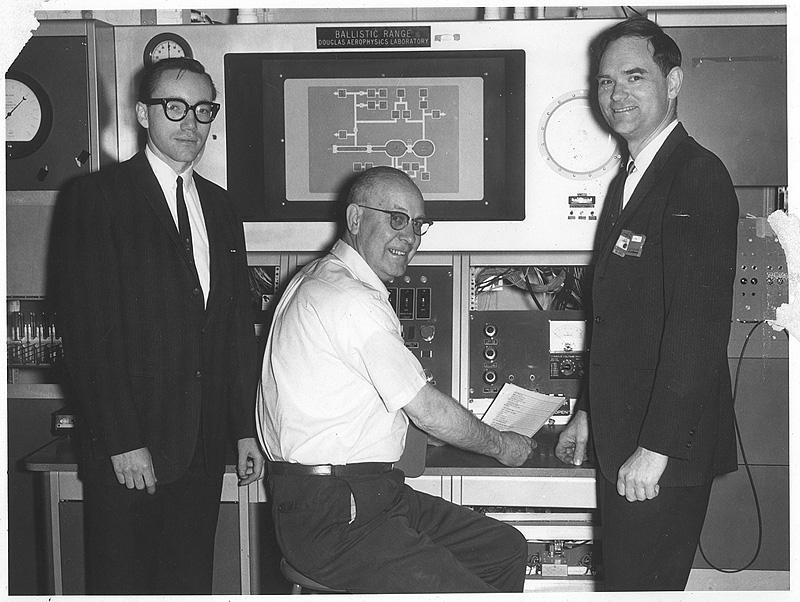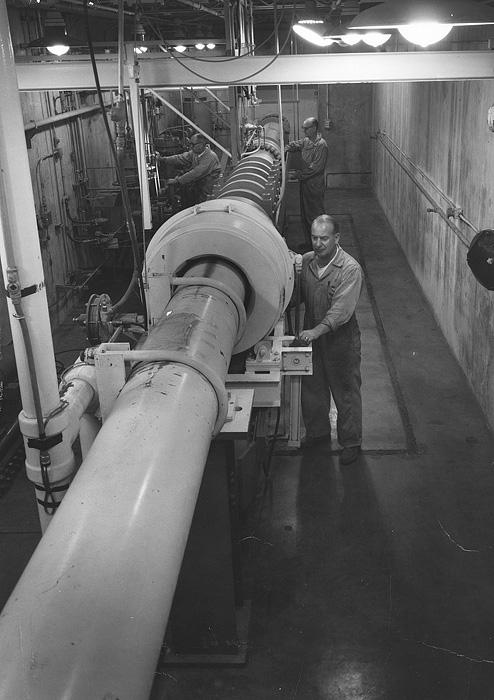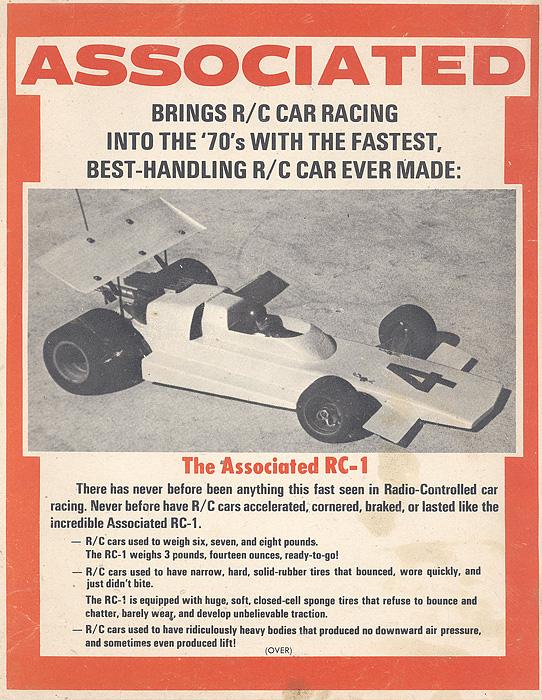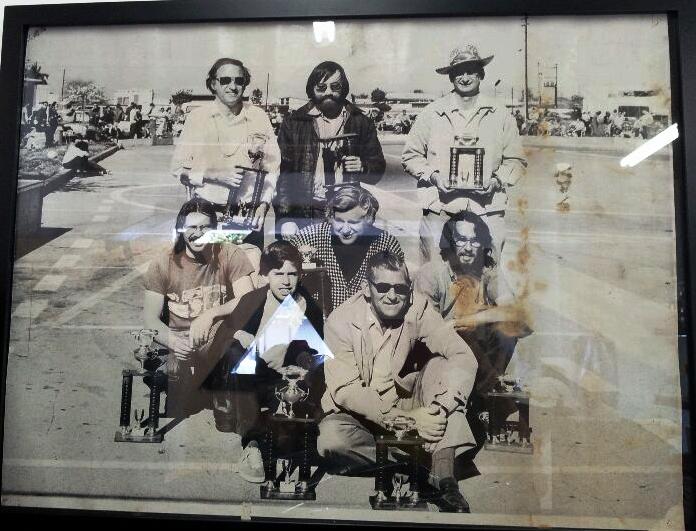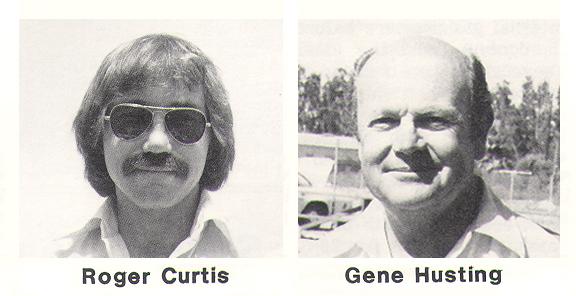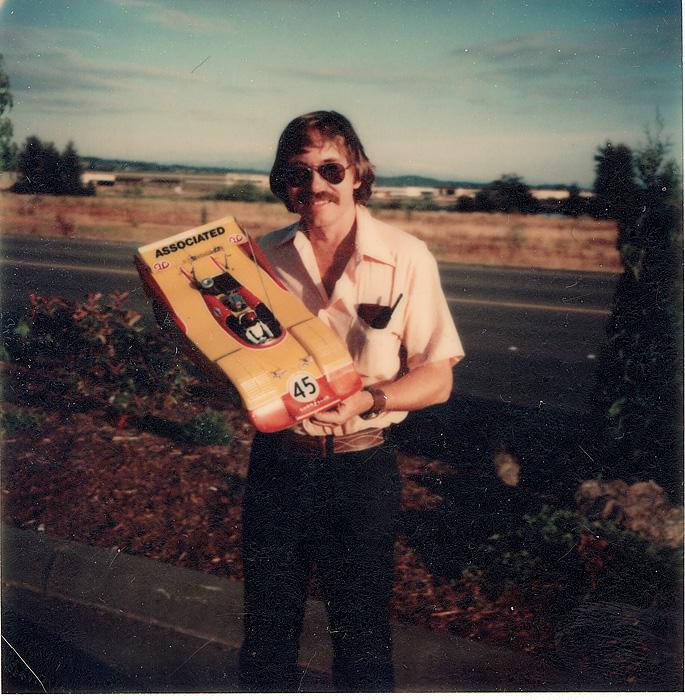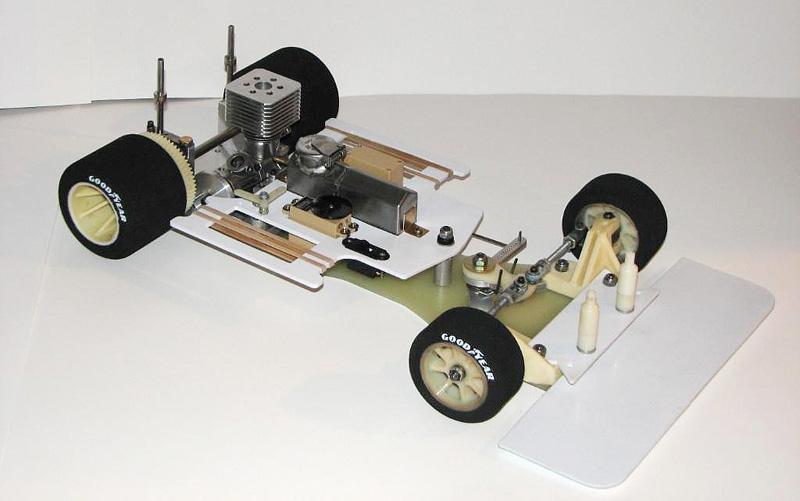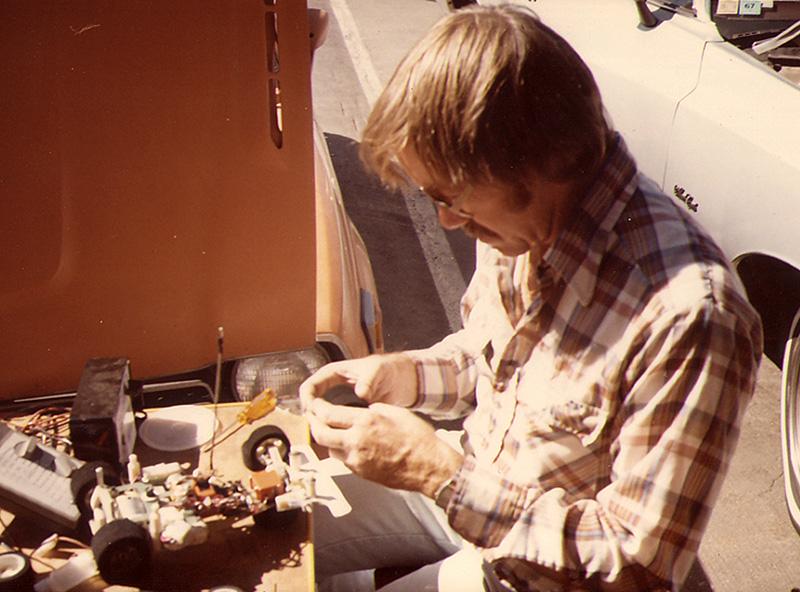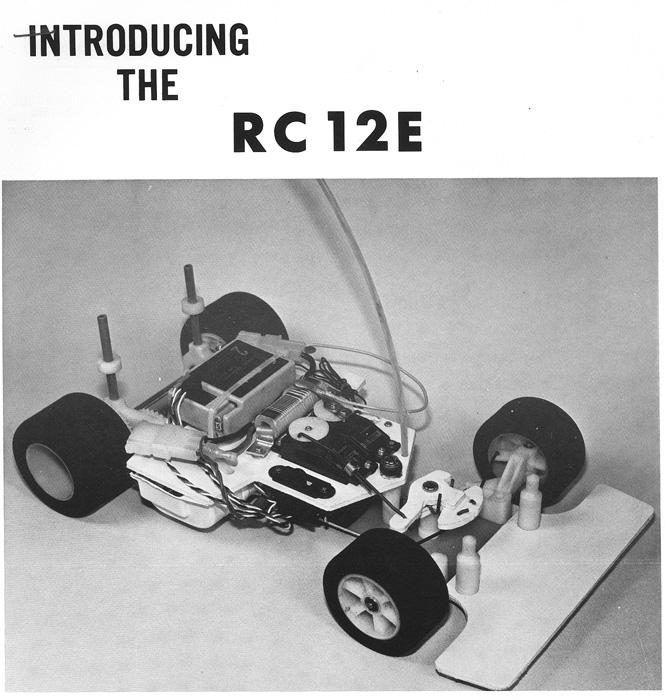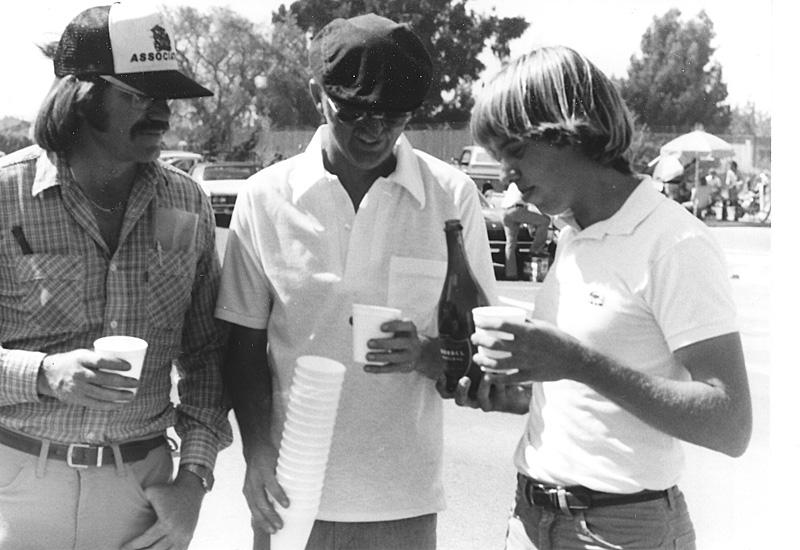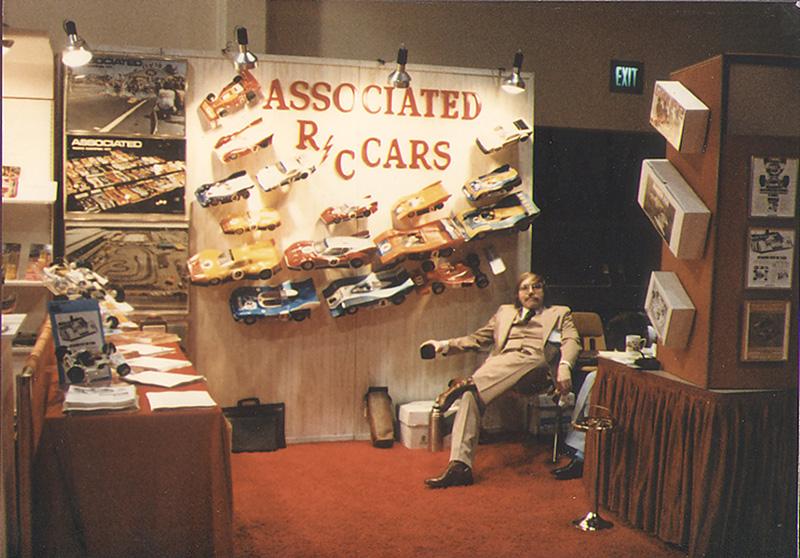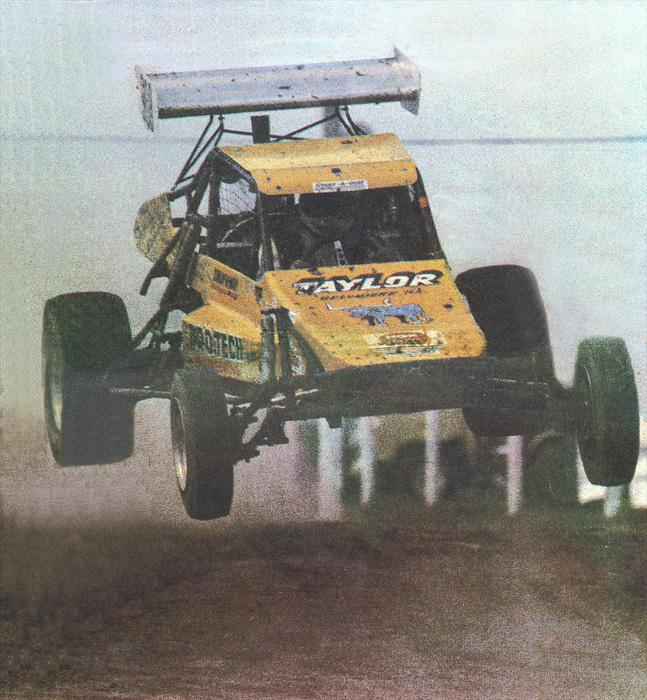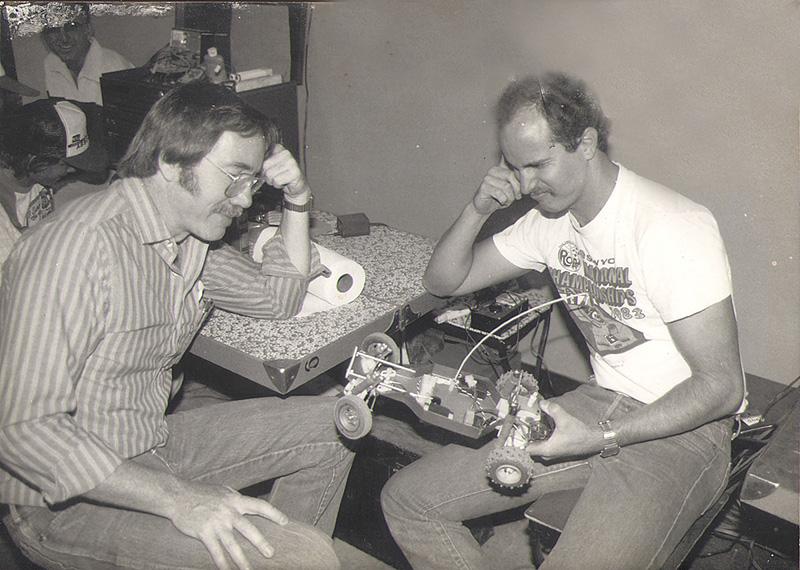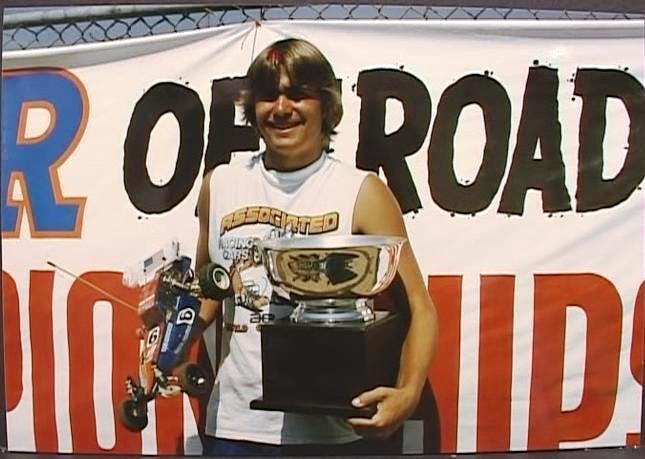Roger Curtis of Team Associated Receives 2013 RC Hall of Fame Award
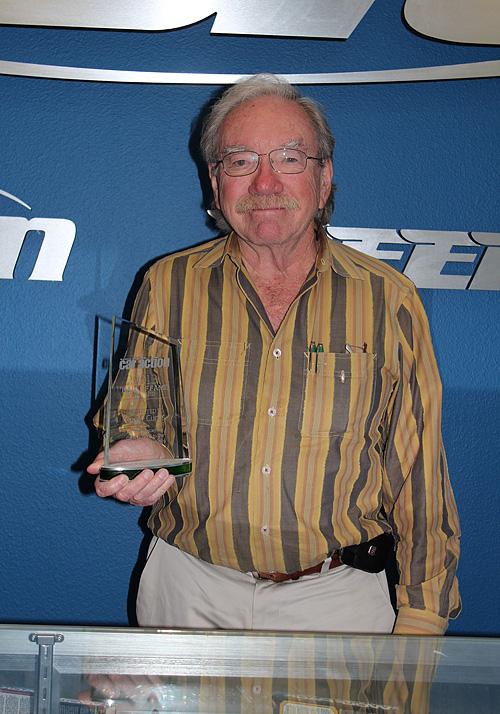
[This is the speech Team Associated Vice President Cliff Lett gave for Roger Curtis' induction into the 2013 RC Hall of Fame at the RCX show June 1, 2013, which was held at the Long Beach Convention Center in Long Beach, CA and awarded by Radio Control Car Action magazine.]
The History of "RC"
To tell you the story of Roger Curtis is an honor for me [Cliff Lett]. It's a fascinating story that goes back almost 60 years, with the majority of it "BC" (before Cliff).
To most people, the letters RC stand for radio control. For all of us at Associated, we know the letters RC as the initials of Roger Curtis, as most of our product names bear his initials. His story is really Associated's story, the company he founded nearly 50 years ago.
 It's the late 1950s. Eisenhower is president, Disneyland opens, NASA is founded, and Roger Curtis is in college. He attends UCLA and Cal Tech where he majors in electrical engineering and mathematics.
It's the late 1950s. Eisenhower is president, Disneyland opens, NASA is founded, and Roger Curtis is in college. He attends UCLA and Cal Tech where he majors in electrical engineering and mathematics.
 Fresh out of school, Roger started working for Douglas Aircraft in 1960 as an engineer, and eventually ended up in the Aerophysics Laboratory Ballistic Range. This is before it was McDonnell Douglas, and long before it became Boeing. The Ballistic Range was perfect for Roger because he had some history of blowing things up as a teenager.
Fresh out of school, Roger started working for Douglas Aircraft in 1960 as an engineer, and eventually ended up in the Aerophysics Laboratory Ballistic Range. This is before it was McDonnell Douglas, and long before it became Boeing. The Ballistic Range was perfect for Roger because he had some history of blowing things up as a teenager.
 One of his most notable projects at Douglas was the development of the light gas gun in this photo, which was over 80' long and would fire a projectile at over 21,000 mph. It was designed and built for many uses, but one of the most impressive was NASA's intention of firing a projectile at the moon, analyze the impact, and confirm that the surface was firm enough for man to land there years later.
One of his most notable projects at Douglas was the development of the light gas gun in this photo, which was over 80' long and would fire a projectile at over 21,000 mph. It was designed and built for many uses, but one of the most impressive was NASA's intention of firing a projectile at the moon, analyze the impact, and confirm that the surface was firm enough for man to land there years later.
One of his assistants, Lee Yurada, was into slot cars and eventually got Roger interested in the hobby. Slot cars were getting popular and both of them started looking into opening their own raceway. It didn't take long to convince Roger to jump into this hobby, and business.
 In fact, Roger got so interested, that in January of 1964 Roger and Lee rented a building in Lynnwood, on Long Beach Blvd, and opened Associated Raceway, only 14 miles away from here [Long Beach]. They built their own slot car track and drag strip. Business was great, so they also purchased some machines in order to sell their own slot car products.
In fact, Roger got so interested, that in January of 1964 Roger and Lee rented a building in Lynnwood, on Long Beach Blvd, and opened Associated Raceway, only 14 miles away from here [Long Beach]. They built their own slot car track and drag strip. Business was great, so they also purchased some machines in order to sell their own slot car products.
After just a few years the slot car business slowed, but there were rumors about the existence of radio-controlled cars.
Roger started searching for the guys who were building the first RC cars and eventually met George Syposs and Norb Meyer, who were already racing homemade RC cars in the local area. They became friends and Roger found out that they had already formed a national racing organization one year earlier. It was called ROAR.
 Roger realized that RC cars were the next big thing, so he and his friend Mike Morrisey quickly designed their own car, called the RC1. In its first race, the RC1 dominated, so much so that others wanted to outlaw the car. There was nothing magical about car. They just applied slot car technology to the design instead of applying model airplane technology like the others had. Roger used foam rubber tires instead of hard rubber tires, and mounted wings on the front and rear of the car.
Roger realized that RC cars were the next big thing, so he and his friend Mike Morrisey quickly designed their own car, called the RC1. In its first race, the RC1 dominated, so much so that others wanted to outlaw the car. There was nothing magical about car. They just applied slot car technology to the design instead of applying model airplane technology like the others had. Roger used foam rubber tires instead of hard rubber tires, and mounted wings on the front and rear of the car.
The RC1 was a big success, so Roger decided it was time to get out of slot cars and devote all efforts to RC cars.
 That's also when Roger decided to leave his job at Douglas. Here he is giving notice.
That's also when Roger decided to leave his job at Douglas. Here he is giving notice.
 So now Roger is making RC cars full time, and he is also racing them and doing quite well. Have you ever noticed that the physical appearance of RC racers change when they start doing it full time? This photo of Roger is from a local race event during the same year he left Douglas. Can you find him? Yep, he's the guy back center that looks like Charles Manson. He's holding his trophy upside down in protest of something that happened during the race.
So now Roger is making RC cars full time, and he is also racing them and doing quite well. Have you ever noticed that the physical appearance of RC racers change when they start doing it full time? This photo of Roger is from a local race event during the same year he left Douglas. Can you find him? Yep, he's the guy back center that looks like Charles Manson. He's holding his trophy upside down in protest of something that happened during the race.
Also, that kid on the lower left is none other than the young Jay Kimbrough.
 As time went on, Roger and his current partner Lee were, well, let's just say they were having some serious issues. In fact, rumor has it that Lee chased Roger down an alley with a samurai sword. Roger decided it was time to find a new partner.
As time went on, Roger and his current partner Lee were, well, let's just say they were having some serious issues. In fact, rumor has it that Lee chased Roger down an alley with a samurai sword. Roger decided it was time to find a new partner.
He met a local Gardena Shell gas station owner who was also into RC cars. His name was Gene Husting. Roger approached Gene about becoming his partner, and in 1972, Gene sold his gas station and bought Lee Yurada's part of Associated.
As new partners, Roger began investigating the next big thing - electric RC cars - and Gene continued with 1:8 gas car development, which was his passion.
At this point, Associated had 6 employees.
 That same year, Roger the racer not only won the ROAR nationals driving the RC1, he also cleaned up his appearance a lot. Back then the road course class was combined with the oval class, and there was an overall winner. Roger won both classes for the championship. Good job Roger - and nice pocket protector!
That same year, Roger the racer not only won the ROAR nationals driving the RC1, he also cleaned up his appearance a lot. Back then the road course class was combined with the oval class, and there was an overall winner. Roger won both classes for the championship. Good job Roger - and nice pocket protector!
 So what did Roger do to celebrate his championship? Go to Disneyland? No way. Roger bought himself a fast red sports car. A 66 E type Jag, to be exact.
So what did Roger do to celebrate his championship? Go to Disneyland? No way. Roger bought himself a fast red sports car. A 66 E type Jag, to be exact.
 In 1975, Roger's new partner Gene finished the design for a new 1:8 gas car called the RC100. Its debut was a success, and the demand for the car exceeded their capacity.
In 1975, Roger's new partner Gene finished the design for a new 1:8 gas car called the RC100. Its debut was a success, and the demand for the car exceeded their capacity.
Associated was growing and Roger needed more help, so he hired Gene's 16-year-old son Curtis Husting as an apprentice and started teaching him the methods of manufacturing. Those were big shoes to fill, but Curtis filled them perfectly.
 In 1977 IFMAR held their first World Championship in Pomona, California. Butch Kroells driving the RC100 won the first World Championship for Associated. Gene Husting finished 3rd, and Associated took the top 7 spots.
In 1977 IFMAR held their first World Championship in Pomona, California. Butch Kroells driving the RC100 won the first World Championship for Associated. Gene Husting finished 3rd, and Associated took the top 7 spots.
Roger, well, he won the C main. Still very respectable, Roger.
 That same year a couple 1:12 electric cars were released into the market, but Roger was hard at work on his own design called the RC12E.
That same year a couple 1:12 electric cars were released into the market, but Roger was hard at work on his own design called the RC12E.
 The RC12E was a hit; in fact, ROAR held a demonstration class at the nationals and the RC12E cleaned house. The demand for 1:12 cars soared and Associated quickly grew to 20 employees.
The RC12E was a hit; in fact, ROAR held a demonstration class at the nationals and the RC12E cleaned house. The demand for 1:12 cars soared and Associated quickly grew to 20 employees.
 Now Associated had an urgent need for electric products like motors, rechargeable batteries and chargers, so Roger hired Mike Reedy to take care of those needs. I could go on for hours about the impact Mike Reedy had on our industry, but that's another story in itself.
Now Associated had an urgent need for electric products like motors, rechargeable batteries and chargers, so Roger hired Mike Reedy to take care of those needs. I could go on for hours about the impact Mike Reedy had on our industry, but that's another story in itself.
Two years later Associated and Reedy won their first 1:12 world championship with Kent Clausen taking the RC12E to victory.
 Then two years later Associated and Reedy won their second 1:12 world championship with Tony Neisinger taking the new RC12i to victory.
Then two years later Associated and Reedy won their second 1:12 world championship with Tony Neisinger taking the new RC12i to victory.
 Roger was a very busy guy now. In addition to designing the products, Roger started attending some industry trade shows in between projects. Associated was still growing quickly, and Roger's search for the next big thing had already begun.
Roger was a very busy guy now. In addition to designing the products, Roger started attending some industry trade shows in between projects. Associated was still growing quickly, and Roger's search for the next big thing had already begun.
 RC offroad buggy racing already existed, but the cars were crude and didn't handle well at all. Most cars had extensive modifications just to make them last for a few minutes. Roger and team attended several full-size car shows and races, and talked to full-size car designers to gather info on offroad buggies.
RC offroad buggy racing already existed, but the cars were crude and didn't handle well at all. Most cars had extensive modifications just to make them last for a few minutes. Roger and team attended several full-size car shows and races, and talked to full-size car designers to gather info on offroad buggies.
Then this photo was found in an offroad industry newspaper which became the inspiration for Roger's design. He went right to work. Little did they know that this product, called the RC10, would catapult the company forward and cause Associated to more than double in size.
 As Roger progressed with the design, Curtis Husting would make the prototype parts. After several early "Frankenstein" designs, the RC10 was in final form. Curtis hand built six prototype cars and the team went racing.
As Roger progressed with the design, Curtis Husting would make the prototype parts. After several early "Frankenstein" designs, the RC10 was in final form. Curtis hand built six prototype cars and the team went racing.
 The first ROAR offroad nationals were in Vineland, New Jersey in 1984. Prototype RC10s designed by Roger and built by Curtis Husting swept both stock and modified classes, with Gil Losi Jr. as top qualifier, and Jammin' Jay Halsey winning both championships. It was a huge success for the team, for the new RC10, and a giant step forward for Associated.
The first ROAR offroad nationals were in Vineland, New Jersey in 1984. Prototype RC10s designed by Roger and built by Curtis Husting swept both stock and modified classes, with Gil Losi Jr. as top qualifier, and Jammin' Jay Halsey winning both championships. It was a huge success for the team, for the new RC10, and a giant step forward for Associated.
Nice shorts, Jay.
 Late that year, the RC10 was released, and demand was through the roof. To increase capacity, Roger moved Associated to a new larger facility in Costa Mesa, California. But it still took Associated over six years to catch up.
Late that year, the RC10 was released, and demand was through the roof. To increase capacity, Roger moved Associated to a new larger facility in Costa Mesa, California. But it still took Associated over six years to catch up.
 The following year, IFMAR held the first offroad worlds in Del Mar, California, and Jay Halsey took the RC10 to its first world title. Way to go Jay.
The following year, IFMAR held the first offroad worlds in Del Mar, California, and Jay Halsey took the RC10 to its first world title. Way to go Jay.
One year later, I met Jim and Jay Halsey, who introduced me to Mike Reedy, who in turn introduced me to Roger.
After a year of racing with the team, Roger hired me as his apprentice.
 One of my first projects working with Roger was designing the generation 1 Stealth cars we made for the IFMAR world champs in Sydney, Australia. Prior to the race there were so many all-night brainstorming and design sessions that I lost count. Sleeping at my desk was a common occurrence. We stayed awake on coffee, snacks from the vending machine, and the chocolate we stole from Midge Husting's file cabinet.
One of my first projects working with Roger was designing the generation 1 Stealth cars we made for the IFMAR world champs in Sydney, Australia. Prior to the race there were so many all-night brainstorming and design sessions that I lost count. Sleeping at my desk was a common occurrence. We stayed awake on coffee, snacks from the vending machine, and the chocolate we stole from Midge Husting's file cabinet.
 The pay off came when we swept the podium at the world championship. This was the kind of job that engineers only dream about - you come up a concept, design it, build it, race it, and see it succeed. And then you get to do all this on someone else's dime. For me, it was a dream job. Thank you, Roger.
The pay off came when we swept the podium at the world championship. This was the kind of job that engineers only dream about - you come up a concept, design it, build it, race it, and see it succeed. And then you get to do all this on someone else's dime. For me, it was a dream job. Thank you, Roger.
 Prior to going to Australia and racing a prototype car that was nothing like we sold, Roger told all of us, "Don't allow anyone to take photos of the car. Keep it under towels and don't leave it out." Then this photo shows up in RC Car Action, with Roger holding the car up so the reporter could fire off a couple of spy shots. Nice.
Prior to going to Australia and racing a prototype car that was nothing like we sold, Roger told all of us, "Don't allow anyone to take photos of the car. Keep it under towels and don't leave it out." Then this photo shows up in RC Car Action, with Roger holding the car up so the reporter could fire off a couple of spy shots. Nice.
 Besides all the serious work that happens at the office, Roger is a lot of fun to travel with. He is a racer at heart, has a great sense of humor, loves good food, and usually picks up the check, which for us freeloading RC racers is a big perk.
Besides all the serious work that happens at the office, Roger is a lot of fun to travel with. He is a racer at heart, has a great sense of humor, loves good food, and usually picks up the check, which for us freeloading RC racers is a big perk.
 But Roger has a dark side too, as he can also be an instigator. At the IFMAR world championship in Japan, the race finished late in the evening, and there were giant beetle bugs flying around. They were about 2 inches is diameter and had big pinchers.
But Roger has a dark side too, as he can also be an instigator. At the IFMAR world championship in Japan, the race finished late in the evening, and there were giant beetle bugs flying around. They were about 2 inches is diameter and had big pinchers.
 Roger made someone a bet about eating one, and then the money started coming out. Roger added to the pile of cash, but so were others, and last I saw, the pot was close to $1000 for someone to eat the bug. One of the US drivers who didn't have a flight ticket home yet, knew he had to do it. He snipped off the pinchers, folded back the legs, and ate it. The bug put up a good fight but after a couple chews, it went down, and the crowd let out a huge groan. There was an even louder groan when the bug came back up. Well done, Roger.
Roger made someone a bet about eating one, and then the money started coming out. Roger added to the pile of cash, but so were others, and last I saw, the pot was close to $1000 for someone to eat the bug. One of the US drivers who didn't have a flight ticket home yet, knew he had to do it. He snipped off the pinchers, folded back the legs, and ate it. The bug put up a good fight but after a couple chews, it went down, and the crowd let out a huge groan. There was an even louder groan when the bug came back up. Well done, Roger.
 Several years later in 2000, Gene Husting decided to retire, and Roger purchased his portion of the company. Now Associated was solely in Roger's hands, and the following years were some of the company's best. We had several designers at this point, but Roger would always be available to step in and offer up some solutions to the problems we encountered in our work. To our engineering department, he became known as our secret weapon.
Several years later in 2000, Gene Husting decided to retire, and Roger purchased his portion of the company. Now Associated was solely in Roger's hands, and the following years were some of the company's best. We had several designers at this point, but Roger would always be available to step in and offer up some solutions to the problems we encountered in our work. To our engineering department, he became known as our secret weapon.
 In 2005, Roger decided to semi-retire and merge Associated with our manufacturing partner Thunder Tiger. It was a difficult decision for Roger to let go of his baby, but he was ready for the change. Part of the deal was for him to stay on part time, which was a comfort to all of us, and especially me.
In 2005, Roger decided to semi-retire and merge Associated with our manufacturing partner Thunder Tiger. It was a difficult decision for Roger to let go of his baby, but he was ready for the change. Part of the deal was for him to stay on part time, which was a comfort to all of us, and especially me.
 Lately Roger is taking things a bit easier, he's cut back on the stress and just enjoying life. He can usually be found traveling around with his best friend Sue. However, he is definitely not off the hook from work.
Lately Roger is taking things a bit easier, he's cut back on the stress and just enjoying life. He can usually be found traveling around with his best friend Sue. However, he is definitely not off the hook from work.
 For 17 years I was Roger's assistant, and for the past eight he has been mine. And I wouldn't have it any other way. He has been my friend and mentor for many years, and an inspiration to all of us at Associated. He is always available to help us with any matter at hand, and he will always be considered our secret weapon.
For 17 years I was Roger's assistant, and for the past eight he has been mine. And I wouldn't have it any other way. He has been my friend and mentor for many years, and an inspiration to all of us at Associated. He is always available to help us with any matter at hand, and he will always be considered our secret weapon.
 So hopefully you know Roger Curtis a little better now. Even though I've only shared a fraction of his history, he has made a huge difference in our industry as well as the lives of many people. He is responsible for some of the game-changing designs in our industry, and the most successful RC race team on the planet.
So hopefully you know Roger Curtis a little better now. Even though I've only shared a fraction of his history, he has made a huge difference in our industry as well as the lives of many people. He is responsible for some of the game-changing designs in our industry, and the most successful RC race team on the planet.
I ca't imagine a more deserving person to add to the RC Hall of Fame. Besides, his initials fit right in.
Thank you Roger, and congratulations.

